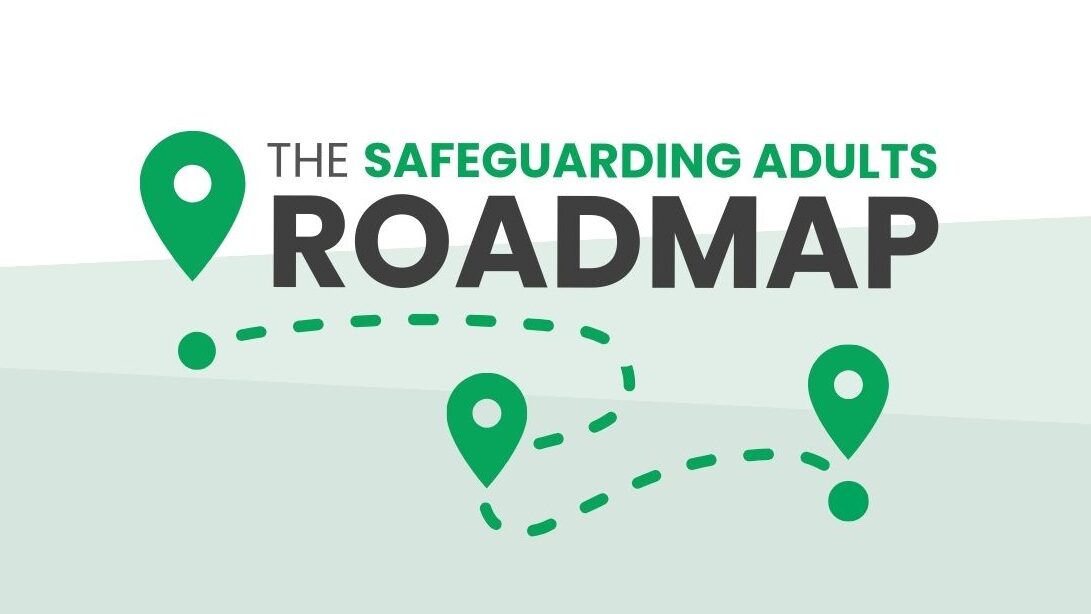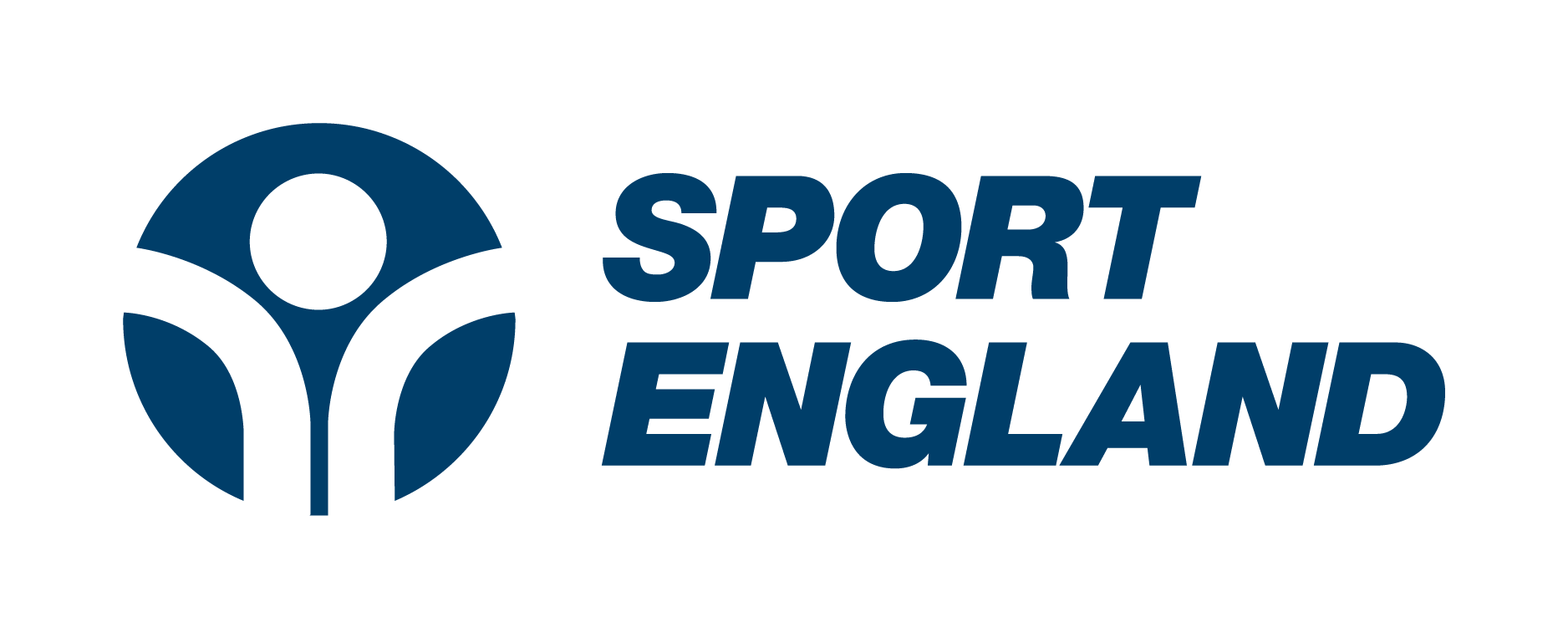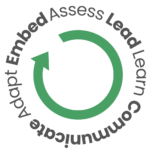
Congratulations on starting your journey with the Safeguarding Adults Roadmap
Whether you are looking to develop a safeguarding adults policy, understand what you need to have in place to safeguard adults or are seeking reassurance that you are meeting your obligations, this Roadmap will guide you through the process and develop your understanding of safeguarding adults along the way.
It will steer you in the right direction and provide you with links to resources and useful information to help you develop good safeguarding adults practice within your organisation.
-
What is the Roadmap
We have developed the Roadmap as a tool to help you:
• Understand what you need to do to comply with your legal obligations
• Guide you through the steps to implement and embed good practice to safeguard adults
• Identify areas and signpost to where you may need extra support to meet those requirements
• Have the confidence to know your organisation is safeguarding the adults in its care.The roadmap is in six stages for you to download and complete. It includes space for you to add your own actions and comments, and links to resources to help you along the way.
-
Who is the Roadmap for?
This resource is for Sports and Activity organisations of any size and structure operating within England who are not required to complete the mandatory Framework as a condition of Sport England Funding*. This could include large infrastructure organisations, membership organisations, grass root organisations. * If you are an Active Partnership or a Sports National Governing Bodies already working with the Ann Craft Trust – please refer to the Sports Framework
-
How to use the Roadmap
Start by downloading Stage One of the Roadmap and begin working through it. Once you’ve completed Stage One, move onto Stage Two.
There is no timescale, some sections may take longer than others and you could be working on multiple tasks at any one time.
There is a checklist in each section to help you identify what you have achieved and the areas left to work on. To support each action there are links to further information, templates and resources to help you.
-
Contributors
The Safeguarding Adults Implementation Roadmap has been developed by the sector for the sector. It has been developed in consultation and with support from leading organisations including: Disclosure and Barring Service (DBS), National Council for Voluntary Organisations (NCVO) and the Sports Governance Academy (SGA); as well as Lead Safeguarding Officers of the Sport and Activity Sector which includes: the Football Supporters Association, Mountain Training, British Nordic Walking, Try Tag Rugby, the Lawn Tennis Association (LTA), Norwich City FA, the and the Code of Martial Arts.
This project is supported by Sport England.


The Safeguarding Adults in Sport Roadmap: Stages One to Six
-
Stage One: Identify Safeguarding Risk and Assess Need

Carrying out a full and comprehensive assessment of your current status will provide you with detailed insight into your strengths and weaknesses as well as help you identify and prioritise key areas that require attention. Your assessment should cover all aspects of your organisation’s work where safeguarding adults is relevant. This is likely to involve the input of other members of staff, board members and volunteers who will have additional information and valuable insight to share. Generally, your assessment should seek to cover:
- Governance and Leadership – to ascertain the level of understanding and organisational commitment to safeguarding adults by identifying what is in place at board/committee level. For example, is there a strategy for safeguarding adults, a vision, strategic action plan, board champion, dedicated resources and personnel. Do board members have a good understanding of how safeguarding is being implemented and aware of areas of safeguarding concern, is there opportunity to discuss this at Board meetings.
- Day-to-day operations – identifying your stakeholders, users, groups and services and detailing how, when and when you work with them assessing what safeguarding arrangements you have in place or are required to have in place to ensure that adults feel safe.
- Current policies and procedures: – what is in place or missing regarding adult safeguarding policies and procedures, are they inclusive and relevant to all stakeholders and up to date?
- Management systems – assessing your existing systems, evaluating what’s working well and where there are gaps in relation to receiving and managing adult safeguarding concerns.
We’ve created a working document that you can download and complete. It includes space for you to add your actions.
Download and Complete Stage One: Identify Risk and Assess Need
-
Stage Two: Leadership and Responsibility

Creating a safer culture requires leaders to understand and embrace the values that underpin a safer culture. It requires leaders to listen to stakeholders, challenge the status quo and invest in change in order to create an environment where everyone:- Has the right to have fun and be safe from harm and abuse
- Is treated with respect and dignity
- Feels valued and treated equally
- Has a say – their voice is listened to, welcomed and encouraged
- Has the chance to thrive
- Is empowered to recognise and report concerns without fear or judgment
- Knows concerns are actively followed up and taken seriously
- Has the right to organisational transparency, honesty, integrity and fairness
- Is offered equal opportunities
- Is encouraged to, and has the opportunity to, learn, reflect and improve
Leadership from the Board or Committee is required to ensure that safeguarding adults is firmly on the agenda and implemented throughout the organisation. With the areas of risk being recognised in Stage One, the Board will need to agree to dedicated time and resource to put effective measures in place to mitigate against the risks. An action plan with clear tasks, timeframes and allocated resource should be developed along with a statement of intent.
It is important that you consider your governance structure at this stage, clearly identifying who is accountable and responsible. For example, your responsibility for participants involved in direct delivery of activities will be different to those involved in one of your affiliated groups.
You’ll establish:
- Statement of intent
- Safeguarding lead
- Financial investment
- Staffing requirements
- Training requirements
- Action plan and timeframe
Download and Complete Stage Two: Leadership and Responsibility
-
Stage Three: Develop and Learn (policy, procedures and training)

This stage is about developing a safeguarding adults policy and procedures that are robust and fit for purpose and bespoke to your organisation. It is important to use the right language for your audience and adapt already existing templates to suit your needs. It is a good idea to consult with a range of staff and user groups throughout your organisation to ensure that your policy and procedures work for all.You should also plan and be prepared for an increase in safeguarding enquiries, questions and referrals as the policies and procedures are shared with the rest of the organisation and user groups. To help the smooth implementation of this stage, plan to roll out safeguarding adults training across the organisation so that everyone has a basic awareness and knows what to do if they have a concern. There are different courses available for different job roles which can be found on our website here: Choose the right safeguarding training
You’ll establish and implement your:
- Safeguarding Adults Policy and other policies
- Safer recruitment and safe running and reporting procedures
- Resources and tools
- Staff skill development
-
Stage Four: Communicate and Implement

This stage is all about communicating to your stakeholders your commitment to safeguarding adults, sharing the policies and procedures you have in place, activating your policy and procedures, monitoring their effectiveness and seeking feedback from your stakeholders.As identified in Stage 3: Develop and Learn, consideration should be given to the language used in your documents to ensure it resonates with your target audience. Safeguarding Adults may not be at the top of everyone’s agenda and therefore needs to be introduced in a way which is relevant and applicable to the range of people within the organisation. The information will need to be tailored to meet the needs of stakeholders which should form part of the communications plan. Safeguarding information should be easily accessible to all supported by links for further information.
Once you have shared your policy and procedures now it the time to start using them and seek feedback from your stakeholders.
You’ll develop processes to:
- Develop a communications plan – to inform staff, volunteers, participants etc.
- Start using your policy and procedures
- Implement the safeguarding action plan
- Establish monitoring arrangements
-
Stage Five: Review and Adapt

In order to evaluate the effectiveness of the measures that have been put in place, monitoring systems – (both short and long terms) should be developed from the start. This can then be used to evidence whether or not the level of risk, identified in the risk register, has lowered. It should also identify any areas that may need adapting if they are not working as well as expected.Safeguarding adults is a process and all policies and procedures should be reviewed every two years to ensure they are still fit for purpose and to include any new legislative changes.
You’ll develop processes to:
- Monitor and evaluate impact against action plan
- Produce board reports
- Review risk register and add new areas as necessary
- Amend policies and procedures as required
- Include the voice of the stakeholder
-
Stage Six: Embedding and Organisational Learning

By this stage safeguarding adults should a constant positive thread running throughout the organisation. Systems and procedures should be well known and used within the organisation and, most of all, stakeholders should feel safe and included, that they are able to speak up if they feel something isn’t right and know that they will be listened to and responded to appropriately.Our Safer Culture Safer Sport campaign includes a range of podcasts, articles and resources to help you embed safeguarding across your organisation.
Monitor and report on:
- Evidence that the safeguarding culture is changing
- Effectiveness of policy and procedures
- Sharing learning with others
- Number and types of referrals
Download and Complete Stage Six: Embedding and Organisational Learning
-
Stage 1 to 6 Complete Download
We’ve broken down the Roadmap into 6 sections to help make it more digestible. But we have also provided this full download if you’d rather download the full Roadmap and work through all the sections at once.
Download and Complete Roadmap: Stage 1 to 6 -
Have You Completed Stage Six of the Safeguarding Adults in Sport Roadmap?
Safeguarding adults is a continual process. Once you’ve added your notes and actions to all stages of the Roadmap, it’s time to go through and complete the actions.
We suggest working through the Roadmap every 2 years to build a process for continual improvement in your organisation.
